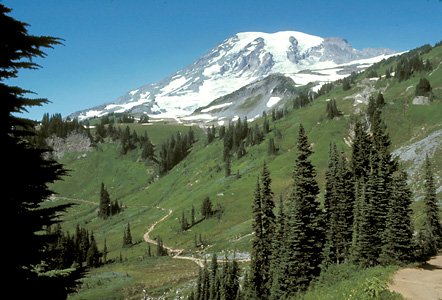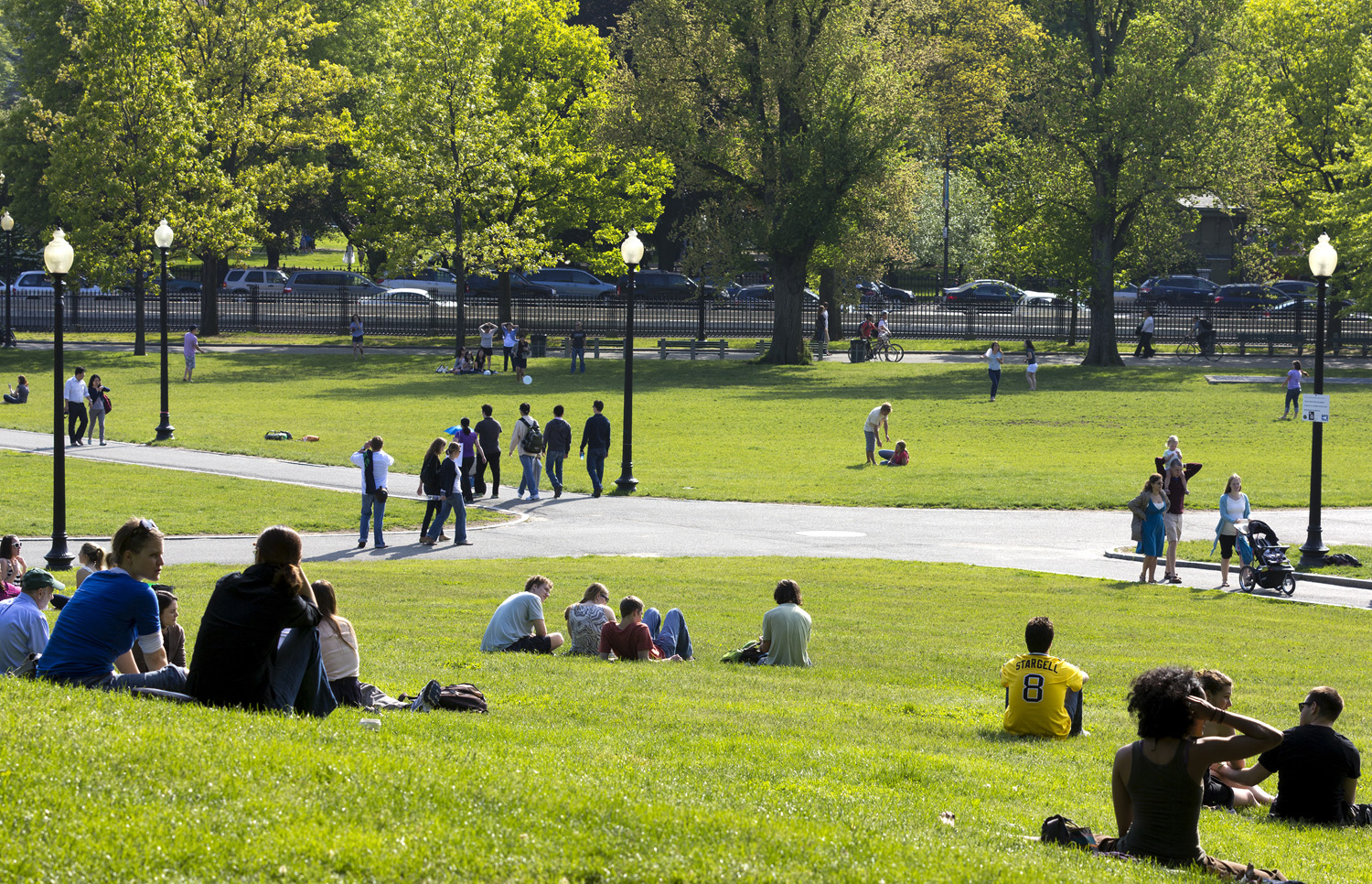Park is usually a section of public land set aside for enjoyment by the public. Many parks are used for recreation and to allow visitors to relax in natural environments. Some parks are used for cultural and educational events, sports, rallies, and festivals. Parks come in many sizes, from tiny parks less than a block square to national parks containing vast areas of wilderness. Local, state, provincial, and national governments around the world administer park systems. Some parks are privately owned and administered. Among these, some are open to the public and others are not.

Kinds of parks.
There are many kinds of parks. This article describes two main kinds: (1) urban and regional parks and (2) state, provincial, and national parks. For information on theme or amusement parks, see Amusement park .
Urban and regional parks
provide greenery and open space that add variety to metropolitan, city, and town landscapes. Such parks are generally administered by local government bodies. Many urban parks have playgrounds and picnic areas, and some have trails for biking, horseback riding, roller skating, running, and walking. Some also have zoos and facilities for basketball, tennis, and other sports. At many lakeside parks, visitors may swim, sail, or canoe. Some parks sponsor classes in such recreational activities as nature study and crafts.

In most countries, urban areas have a variety of parks. For example, the large Fairmount Park in Philadelphia, Pennsylvania, includes a zoo, a theater, an outdoor amphitheater, and several historic mansions. Western Sydney Parklands in New South Wales, Australia, includes a mountain bike trail, an Olympic equestrian center, and an off-leash dog park.
State, provincial, and national parks
serve a number of purposes. For example, many national governments set aside land to preserve spectacular mountains or lakes, dense forests, or unusual wildlife. Some parks include geysers, glaciers, or interesting rock formations. Many parks offer campgrounds, trails, or skiing areas. Lakes in some parks are used for swimming and other water sports. State, provincial, and national governments also preserve areas for their historic and cultural value or for recreational use.
The United States has about 60 national parks and about 7,800 state parks. The national park system includes national parks, monuments, battlefields, military parks, historical parks, historic sites, lakeshores, seashores, recreational areas, scenic rivers and trails, and the White House. Canada has about 40 national parks and about 1,200 provincial and territorial parks. The national government of Australia manages six national parks. Australian states and territories manage more than 800 others.
History.
Historians credit the ancient Sumerians of Mesopotamia with creating the first parks during the 2300’s B.C. Many early parks featured hunting areas or elaborate gardens.
The first public parks probably appeared in Greece. By the late A.D. 1200’s, small public parks had become common in many European cities. Boston Common, the first public park in colonial North America, was established in Boston in 1634. In 1858, work began on Central Park in New York City. Two landscape architects, Frederick Law Olmsted and Calvert Vaux, designed the park. Their attempt to create a rural atmosphere in the park influenced the design of many parks in U.S. cities.
In 1864, California established the first two state parks in the United States. In 1872, the U.S. Congress passed a bill to establish Yellowstone National Park, the world’s first national park. The world’s second national park, Royal National Park in New South Wales, Australia, was established in 1879. Banff National Park, created in 1885 as Banff Hot Springs Reservation, became Canada’s first national park.
